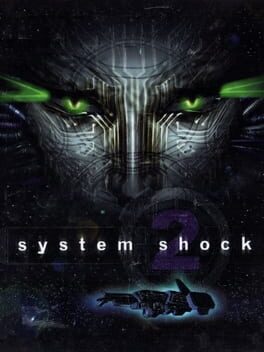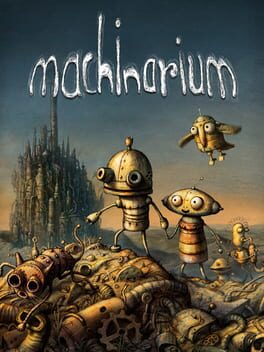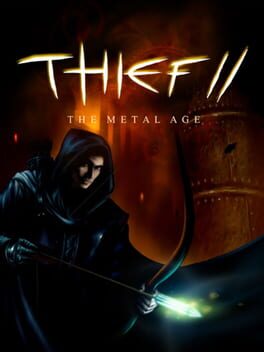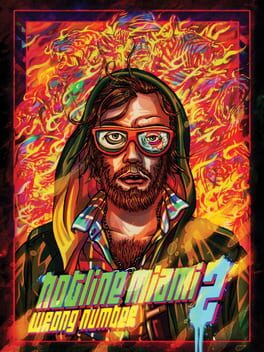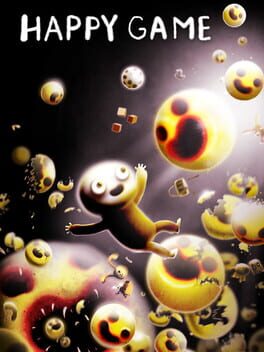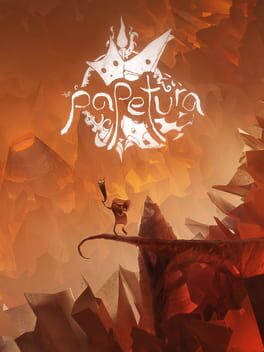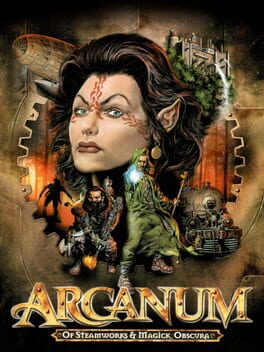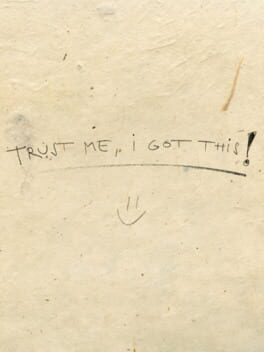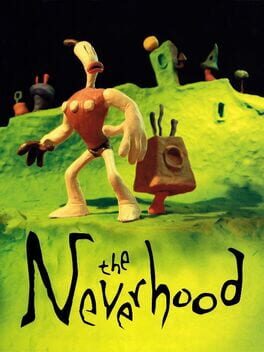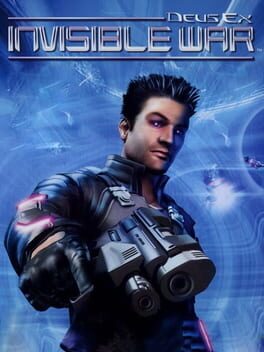Rogueliker
BACKER
Nothing here!
Badges

Adored
Gained 300+ total review likes

Shreked
Found the secret ogre page

Replay '14
Participated in the 2014 Replay Event

Listed
Created 10+ public lists

Well Written
Gained 10+ likes on a single review

1 Years of Service
Being part of the Backloggd community for 1 year

GOTY '23
Participated in the 2023 Game of the Year Event

Loved
Gained 100+ total review likes

N00b
Played 100+ games

Popular
Gained 15+ followers

Best Friends
Become mutual friends with at least 3 others

Pinged
Mentioned by another user

Donor
Liked 50+ reviews / lists

Full-Time
Journaled games once a day for a month straight

On Schedule
Journaled games once a day for a week straight

Noticed
Gained 3+ followers

Gone Gold
Received 5+ likes on a review while featured on the front page

Liked
Gained 10+ total review likes

Roadtrip
Voted for at least 3 features on the roadmap
Favorite Games
229
Total Games Played
055
Played in 2024
149
Games Backloggd
Recently Played See More
Recently Reviewed See More
That didn’t sound right, wait a sec… Okay, now that’s better!
Doug TenNapel has always been an excellent animator first and a so-so game designer second
I mentioned Machinarium above, and I think it’s a nice segue into how a studio such as Amanita Design answers this question. Samorost 1 and 2 are completely linear experiences where you’re always moving forward from one screen to the next, so each screen is its own puzzle where the player must carefully observe the environment and experiment with each interactable object, requiring them to find out how to appropriately use each object at the right time to advance into the next level, and since all puzzles are each confined to a single screen, there’s never a moment of backtracking. Other titles from Amanita Design, including Samorost 3, Machinarium and Botanicula, do incorporate the standard backtracking and inventory, but how their puzzles are approached can vary from game to game. Machinarium emphasizes the use of Josef’s ability to change sizes to reach important items and moving through certain passages as well as individual puzzles such as sliding tiles and moving levers to control certain contraptions. Samorost 3 has the cornet, which allows you to listen to specific objects’s sounds, either to unlock a puzzle you must solve, solutions for other puzzles found elsewhere or even just tidbits of story, as well as incorporating the environmental puzzles from its predecessors and the individual puzzles from Machinarium. Botanicula doubles down on the environmental puzzles while also incorporating the character roster with specific uses for specific puzzles, some of which are more akin to minigames that test your reflexes and willpower, that’s not saying they’re hard on practice, but they’re still fun to execute upon.
What does The Neverhood do in comparison? Well, it unfortunately doesn’t. It removes the inventory system without adding anything substantive to compensate for it, meaning the designers are essentially locked out of some puzzle ideas entirely, and thus must make up for this with the kinds of puzzles I mentioned above, and if that’s the case, then how does The Neverhood fare? It’s a mixed bag, for one there’s the standard match-two, sliding tiles, you know the classics, on the other there are the also typical “Write this code down, you’ll need it later on” puzzles and then there are a few instances of the environmental puzzles I also mentioned a lot. The problem is, in practice, the individual puzzles are simply that, standard, I’m pretty sure everyone knows how match-two or sliding tiles work, so that means they don’t have the most sauce, the notebook-worthy puzzles at best have that classic problem where you find the solutions HOURS before the actual puzzle comes up, and at worst are barely even puzzles at all so much as arbitrary roadblocks that rob the game of opportunities for puzzles, and the environmental puzzles are pretty underutilized all-around, a shame since a game made in claymation could have lended so many great ideas for puzzles using the environments made entirely with clay. All of this makes for a mechanically pretty uneven game, signature of Doug TenNapel I’d say, if I hadn’t played any Amanita Design game prior to playing The Neverhood I would be all over it regardless of its middling puzzles.
But, I’ve been of the mind that most point-and-click adventure games live and die by what’s beside the gameplay, and though The Neverhood is far more focused on puzzles and thus deserve some flack, its sense of style and presentation carries it HARD, it’s like Goliath carrying David. As I’ve said above, every inch of this game is made almost entirely of clay, the effort and passion that went into making every setpiece or cutscene could be easily gleaned from every tiny detail in here, be it the first-person Myst-esque segments where Klayman is walking around the Neverhood alone while a ominous ambience plays in the background, or the aforementioned Klayman’s shape-bending and goofy-ass animations, even just the scenery and the character designs are a marvel to look at, I wish there was a TV show based on it. I also find very charming the juxtaposition between the eerie quietness evoked by the first-person walking segments and the wacky cartoonishness of the third-person interior segments with the killer soundtrack by Terry Scott Taylor, a mix between jazz and experimental that’s truly remarkable, be the godlike saxophone or the hilarious vocals spouting gibberish half the time yet somehow actually form “coherent” phrases, it’s quirky as all hell and truly emblematic of The Neverhood (I should definitely check out Skullmonkeys too, if just for Terry Scott Taylor’s soundtrack on that game). In general this game is so endlessly charming that even its biggest faults could never possibly tarnish a game with such inspired aesthetics and soundtrack.
The Neverhood is definitely a really fascinating game (despite me dunking on it for most of this review), released during a time where developers, alongside artists and musicians, experimented with the medium in different ways, meshing their craftsmanship with the power of video games, and I think they are such a great example of what gaming can achieve at its best in a different manner to, let’s say, Fallout and Half-Life, the 90s and 2000s were truly a time for experimentation that has been resting with indie developers as AAA games become more expensive to develop and all that nonsense, and thus the room for this kind of experimentation has largely diminished. However, freeing the game from its abandonware status would present a double-edged sword. On one hand, Doug TenNapel is a far-right fuckface who openly supported Comicsgate, a hateful Gamergate wannabe that solely existed to incite violence against minorities, and I think anyone who unironically supports this kind of stuff deserves to be tossed into the fiery chambers of the Holocaust (that also applies to anyone who believes in such nonsense as DEI and supports people from The Fandom Menace). On the other hand, it’s a shame The Neverhood, alongside so many other games such as The Dark Eye and Eastern Mind: The Lost Souls of Tong-Nou, never managed to leave abandonware status, since they are prime examples of undersung artistic achievements in the realm of video games that, had they been commercially successful back in the day, would have possibly been as monolithic and representative of games as an artform as Myst was back in 1993. Maybe if The Neverhood also had more interesting puzzles as well but that’s besides the point (to be fair though, Myst is a snoozefest). For what it's worth, at least there was along the way a certain other little goofy guy in outer space whose magical journeys left a long-lasting impact in many people’s minds… But that's a story for another day, in another galaxy.
Despite this all, go play The Neverhood, it’s easy to run on modern systems nowadays thanks to ScummVM!
In that same period of time, one could beat both Samorost 1 and 2.
Also in that same period of time, one could explore the entirety of Liberty Island in the original Deus Ex... Or Life of the Party from Thief II: The Metal Age.
Also in one hour, one could beat almost any NES game so long as they were skilled enough... Or some tough Run-and-Gun or SHMUP such as Alien Soldier or Ikaruga.
YIKES!
